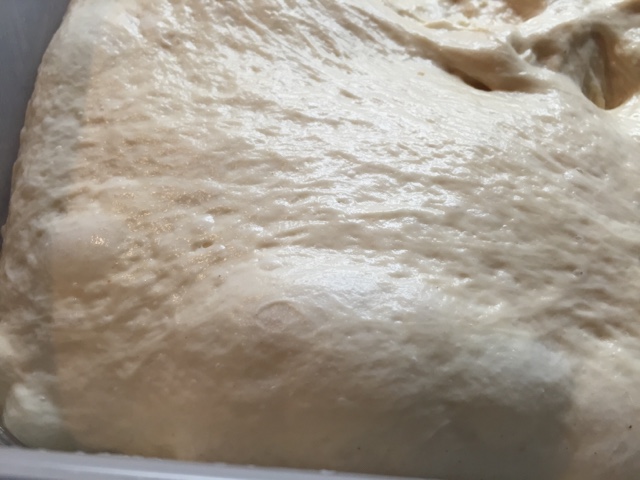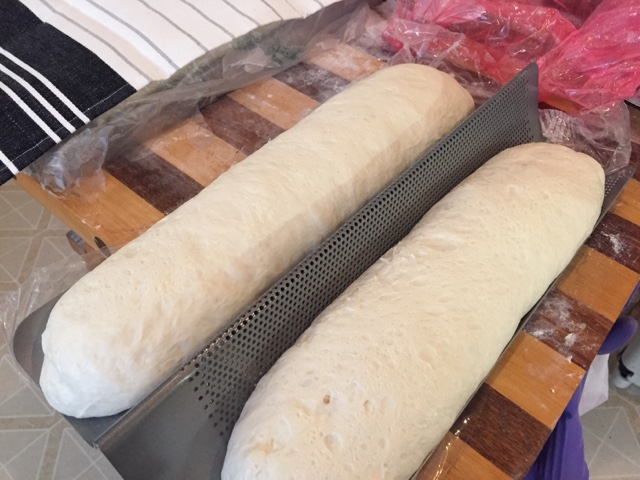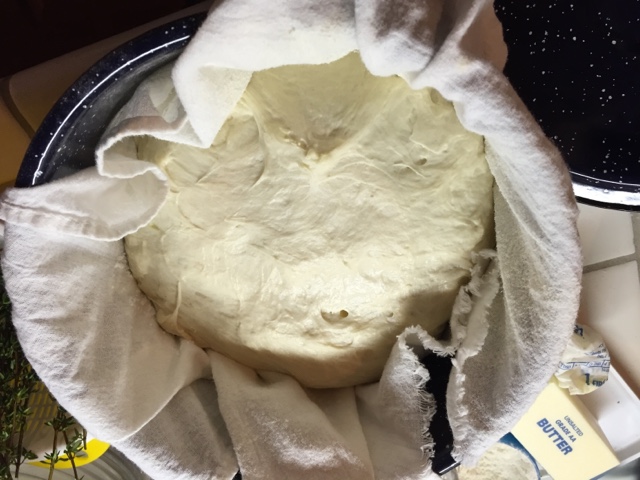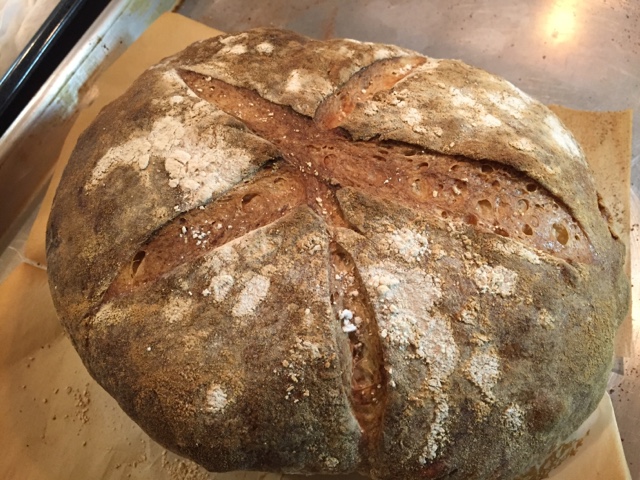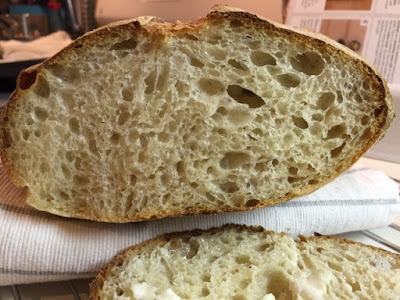Here is the picture of a simple Yule Log decorated just enough with Chocolate Ganache. Couldn't find any candied fruits, so used chili pepper flavored popcorn to give some holly effect.

(This Yule log is not decorated, yet. But it will be tomorrow.)
Since I am getting a good hang making this chiffon cake, I thought why not make Yule Log with it instead of the usual sponge cake. So, here it is. Instead of driving down to be with my family on the Christmas eve, I baked.Here is the result:
Ingredients:
10 eggs - separated
Egg Yolk mixtures:
10 Organic Large Egg Yolks
60 g Organic Cane Sugar
1/4 tsp Kosher Salt
125 ml Extra Virgin Olive Oil
90 ml Organic Whole Milk
95 ml Coconut Milk
260 g Shifted Pastry Flour
Egg White Meringue:
10 Egg Whites + 130 g Organic Cane Sugar.
Equipment.
Two separate bowls, two separate large hand whisks, and a large spatula.
Angel Food Cake mold. Large flour sack cloth or clean cloth as large as the jelly roll pan.
Jelly roll pan.
Unless you are confident that your mixer is capable of beating up all egg whites at the bottom of the bowl completely. Use your mixer to make meringue.
Mix egg yolk mixtures together and add Shifted Pastry Flour. Mix well. Set aside.
In a large bowl, hand whisk 10 egg whites. Add 1st Tablespoon of sugar when the foam start to appear.
Add constant slow flow of sugar as you continue to whisk egg white. Beat until stiff peak forms.
Using a whisk mix 2 C of meringue into yolk mixtures to lighten it up.
Add another 2 C of meringue into yolk mixtures. Use whisk to mix.
Preheat oven to 325'F. Rack set at one below the center position.
Unless your yolk mixtures is in large mixing bowl to begin with, transfer the rest of the meringue into yolk mixtures. Use whisk to mix. Scrape side of the bowl with the whisk and bottom and turn it over to the top. Repeat until all meringue is mixed in.
Fill the cake mold.
Tap gently over the counter to release trapped bubbles.
Bake for 45 - 50 min - depending on your oven's power.
Inserted tester should come out clean.
Remove from oven and invert it over a baking sheet.
Let it cool completely before removing from the mold.
Jelly Roll pan is lined with parchment paper.
Set the rack at 4th from the top or 2nd from the bottom of large gas oven. My gas oven has 5 rack notches.
Then, fill it with 1" of batter.
Unless your yolk mixtures is in large mixing bowl to begin with, transfer the rest of the meringue into yolk mixtures. Use whisk to mix. Scrape side of the bowl with the whisk and bottom and turn it over to the top. Repeat until all meringue is mixed in.
Fill the cake mold.
Tap gently over the counter to release trapped bubbles.
Bake for 45 - 50 min - depending on your oven's power.
Inserted tester should come out clean.
Remove from oven and invert it over a baking sheet.
Let it cool completely before removing from the mold.
With this batch of Chiffon, I made a Jelly Roll and a Chiffon Cake.
The idea is to make a Yule log for tomorrow night's Christmas dinner. Jelly Roll pan is lined with parchment paper.
Set the rack at 4th from the top or 2nd from the bottom of large gas oven. My gas oven has 5 rack notches.
Then, fill it with 1" of batter.
Inserted tester should come out clean.
Remove. Start working the next step right away.
Start separating the sides of cake from parchment paper, gently to avoid tearing. Insert knife to help with separation, if needed.
Remove. Start working the next step right away.
Start separating the sides of cake from parchment paper, gently to avoid tearing. Insert knife to help with separation, if needed.
Place a large flour sack cloth on the counter. Transfer the entire cake with the parchment still attached to the bottom of the cake over to the sack cloth.
Start rolling the longest side of the cake with the parchment paper like doing the Sushi roll to make the first center curl. Open back up gently and remove the parchment paper at the beginning and start rolling the cake. At the end, roll the parchment paper over and around and wrap the sack cloth. Basically just roll the rolled cake with parchment paper again, but this time with sack cloth.
Set it aside to cool completely.
Prepare fillings.
Unroll the cake gently without flattening it.
Fill. Roll back. Decorate. You got a Chiffon Cake Yule Log.
Set it aside to cool completely.
Prepare fillings.
Unroll the cake gently without flattening it.
Fill. Roll back. Decorate. You got a Chiffon Cake Yule Log.
Boxed up and ready for tomorrow.
And here is the other chiffon cake in its regular Angel food cake mold.
And here is the other chiffon cake in its regular Angel food cake mold.
Finishing touch for the Yule Log at the party site was filling the center with creme chantilly. For ganache - A few ounces of chocolate pistolles melted with heated heavy whip cream and some heavy corn syrup. Taste? It was wonderful. It tasted so much better than the sponge cake. We all love chiffon cake.

























